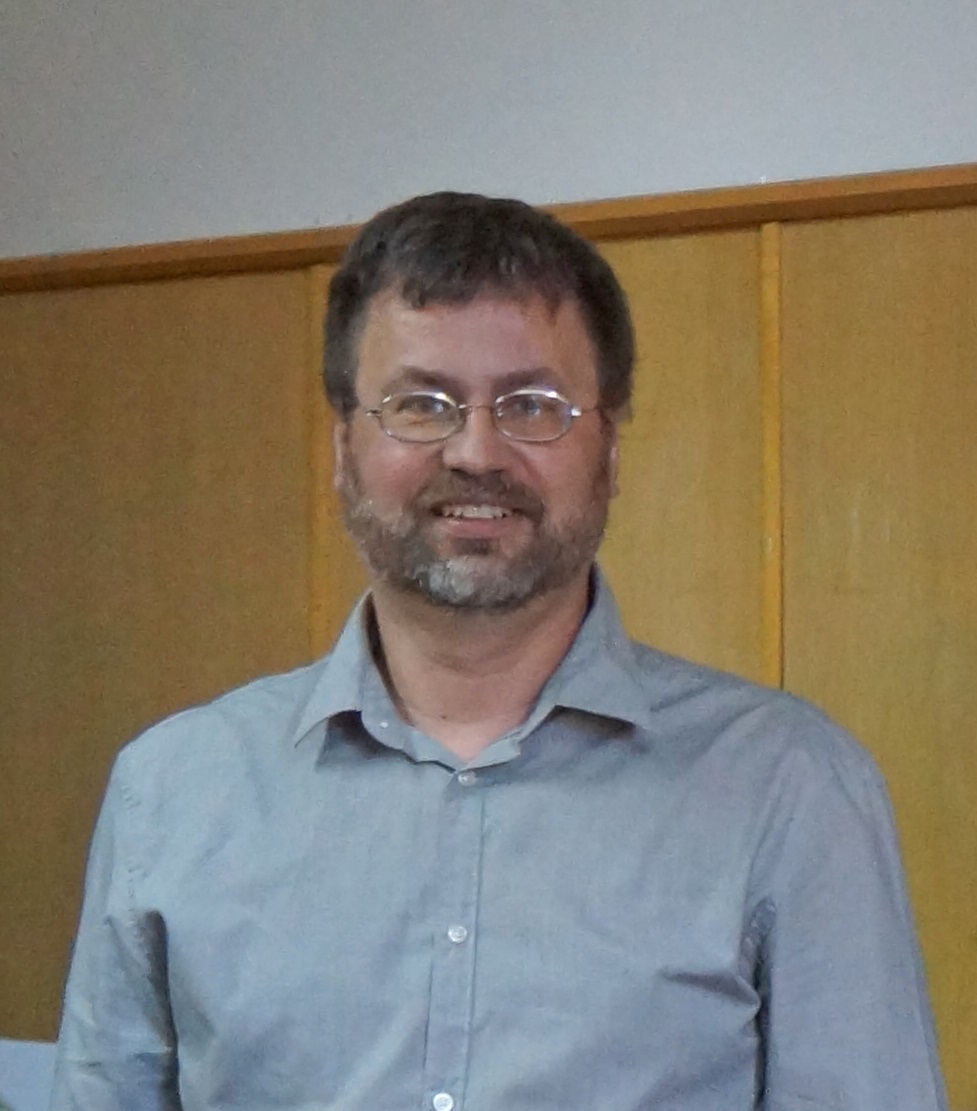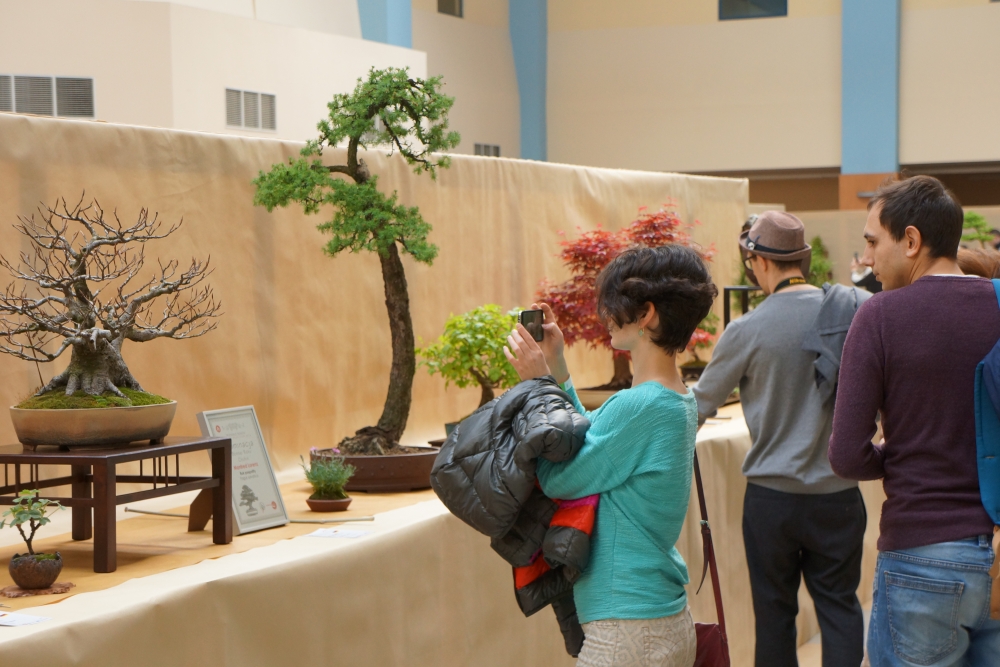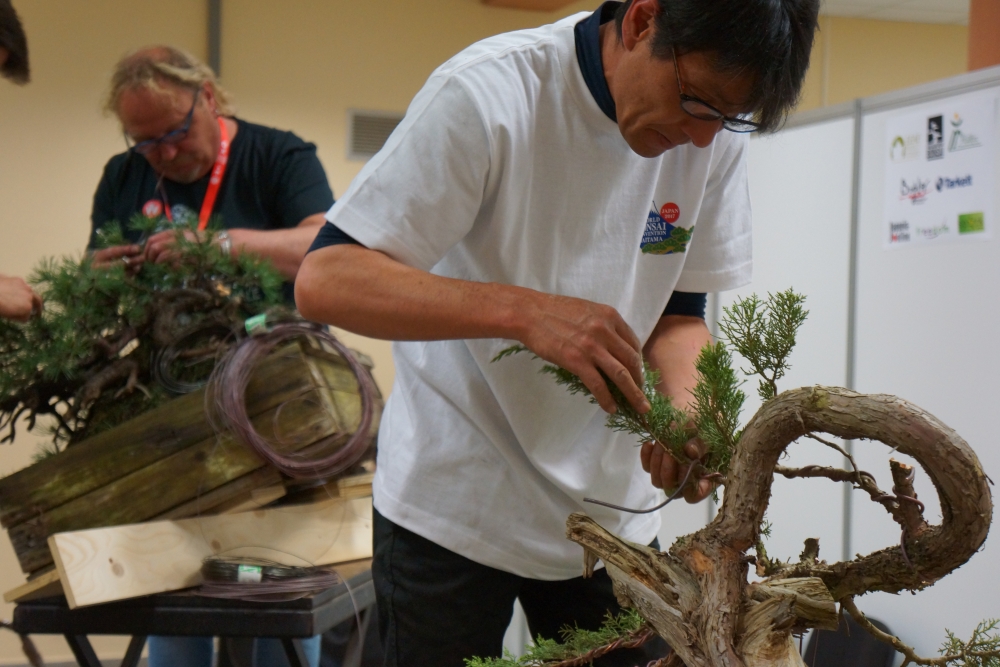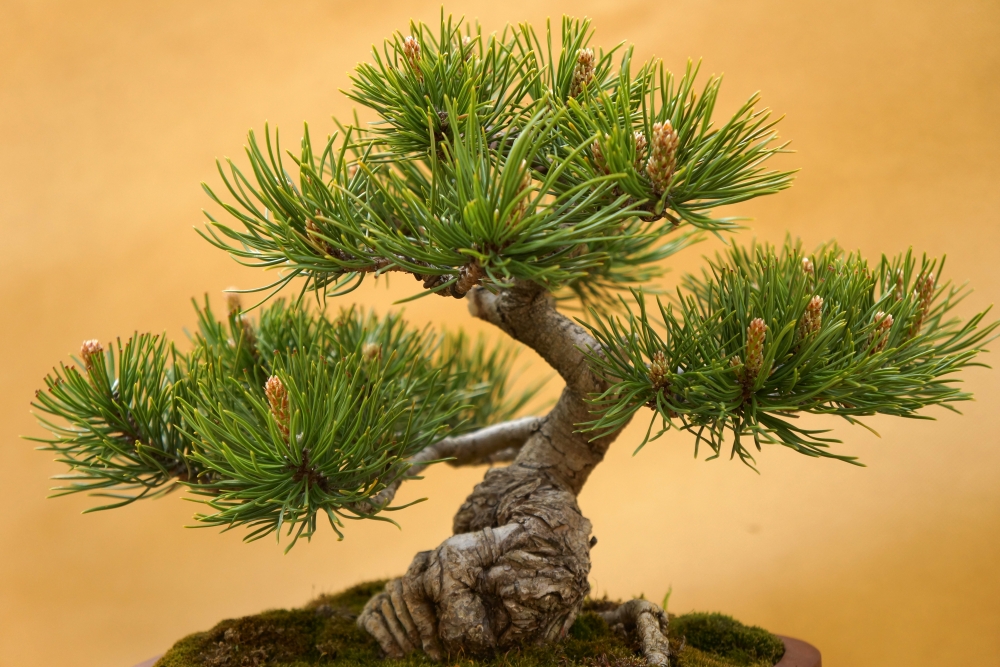Column
ColumnThe Way of Bonsai
Forgive me such a personal approach, but I do have a problem with bonsai. I love gardening, especially Japanese style of gardening, and I am trying to keep my garden in a slightly Japanese style. But any time, when I have to cut a twig of a plant I do feel sorry. And in my mind I am telling to the plant something like: “Excuse me, I have to do it, it will be good for you”. It is not for any kind of religious conviction, perhaps only for a childish instinct.
However, year after year, when I am watching my garden growing, I do realize that cutting the plants is necessary. And I do cut more and more of the twigs, and the plants do look more beautiful.
Where is the limit? When I look at bonsai trees at the exhibition I just admire them. But when I watch quick bonsai formation during the demonstrations, I still cannot get rid of some terrible feeling. Anyway, this time I had to – I became a co-organizer of bonsai exhibition!
It has started about half a year ago with the meeting of NAMI with two bonsai artist: Wlodzimierz Pietraszko and Michal Malawski – the headmasters of the Polish Bonsai Association which is luckily located in Wroclaw. Michal is a very efficient organizer, Wlodzimierz, who started bonsai popularity in Poland many years ago, talks about the art of tree formation with great inspiration.
I was impressed with his very simple explanation what a bonsai is: just literally “a tree in a pot” and the comparison of a tree and a pot to a painting and a frame. Painting is very important in western culture and most of us do understand the relationship between the painting and its frame. We almost instinctively know which frame fits to a specific painting and which does not. Wlodzimierz usually mention paintings without the frames which were “in style” in some time of the 20th century to convince the interlocutor that bonsai without the pot is a wrong idea. I feel that there is a little overinterpretation, and I do not agree in this point – because there are not only easel-paintings without frames but also not-easel-paintings which are naturally framed (or just do not need any frame) as a part of architectonic composition. Wall-painting was a main part of the visual art during most of the human history and easel-painting is only a small part which dominated last few centuries. I wonder if the bonsai is also such dominating but not only possible style of small tree formation? I am trying to figure how would a bonsai bereft of the pot look like when it would be designed as an integral part of an architectural composition.
Let’s return to the event. I don’t expect all the preparation to be interesting for anybody – let me mention only, that it was really a great pleasure to work with so enthusiastic and professional people like bonsai artist from Polish Bonsai Association.
And finally the great day came!
I hoped that I was well prepared to meet our special guests – I have read much of on-line information available in English and I have seen many photos. I knew that they have different life histories: Koji Hiramatsu – a heir of the four generations’ tradition of bonsai cultivation, who was just born to do what he is doing, and Kevin Willson – a self-made-man who become a bonsai artist from his choice and talent only. I have learned basic information about their styles: shohin of Koji Hiramatsu and yamadori of Kevin Willson.
But to say the true, the real contrast between the two guest was somehow unexpected:
At the first sight the contrast of the postures: Rubens-like great posture of Kevin Willson who looks like an inspired artist but also like a man from the a pub in Essex (please, forgive me Kevin), and the slim, typically Japanese, posture of Koji Hiramatsu.
At the second sight, the contrast of the nature: a little ribald one of Kevin Willson and modest, but cheerful of Koji Hiramatsu. And when the demonstrations and workshops started – the contrast of two ways of working: Kevin Willson working with electric devices with his characteristic look with wood shavings in his hair versus Koji Hiramatsu working only with hand-tools, acting with greater focus and reflection and using physical force only when it was necessary.
And at the end – the contrast of the final artworks – completely different but both evenly exciting.Given all these differences, one could not expect to find anything common in such original personalities, but there was just some: both artist were very direct and open and both really enjoyed their work and enjoyed to show and teach their art.
I will remember the short instruction by Kevin Willson explaining how to make a tree to be not boring by showing the force of gravity or of the wind and I will remember Koji Hiramatsu honestly asking if the audience likes his work.
They have shown us two different paths but both paths were on the great way of bonsai.











